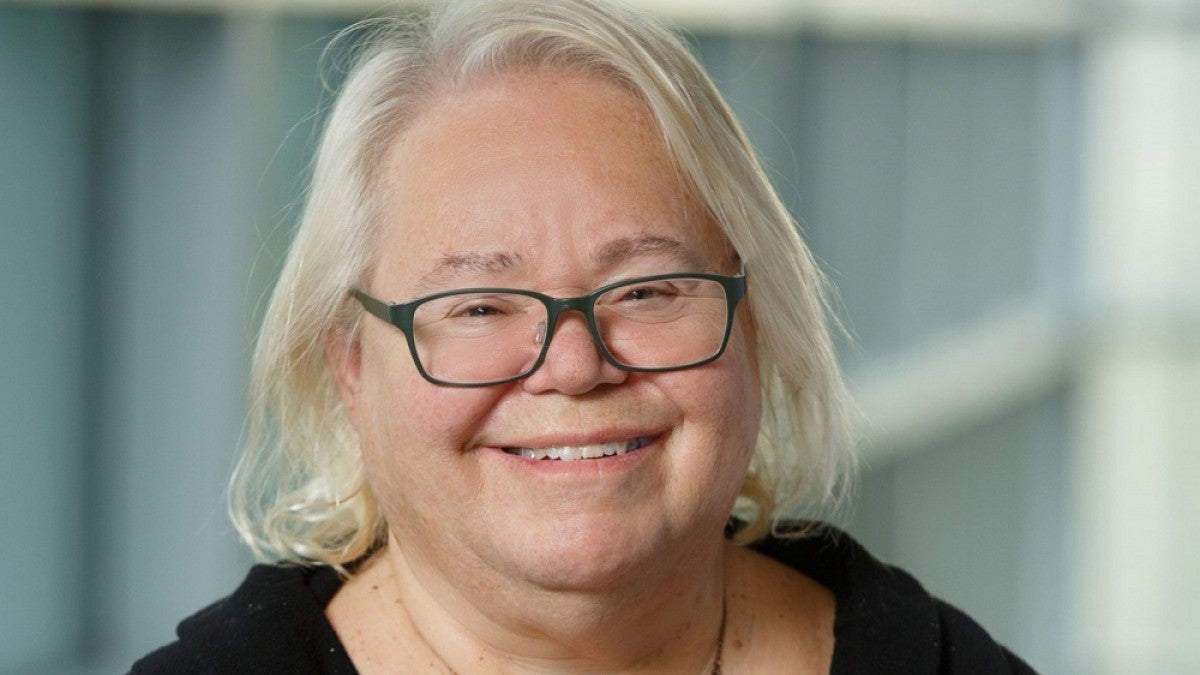For neuroscientist Eve Marder, crustaceans are key to understanding the pathways of the human brain.
Marder studies central pattern generators — groups of neurons responsible for the generation of specific rhythmic behaviors such as walking, swimming, and breathing — in a collection of neurons known as the stomatogastric ganglion in crabs and lobsters.
“The central pattern generators in the stomatogastric ganglion of lobsters and crabs are ideal for many analyses because the STG has only about 30 large neurons, the connectivity is established, the neurons are easy to record from and when the stomatogastric ganglion is removed from the animal, it continues to produce rhythmic motor patterns,” said Marder, the Victor and Gwendolyn Beinfield Professor of Neuroscience at Brandeis University and the featured speaker at this year’s Institute of Neuroscience Mind/Brain lecture Oct. 22.
Marder will explore her pioneering scientific ideas in her virtual talk, “Differential Resilience of Neurons and Networks with Similar Behavior to Perturbation.” The talk is a free virtual event, open to the entire UO community. To reserve a ticket, visit the registration page.
“Dr. Marder has spent more than four decades examining the fundamental processes of animal and human brains and her impact on her field has been immense,” said David McCormick, director of the Institute of Neuroscience. “We’re fortunate to have her as our featured speaker and we look forward to what promises to be an enlightening talk.”
Years ago, after receiving her doctorate from the University of California, San Diego, Marder spent a year at the UO as a postdoctoral scholar in the lab of neurobiologist David Barker. She finished her postdoctoral studies at the École Normale Supérieure in Paris before beginning her independent academic career at Brandeis University in 1978 as a faculty member in the Department of Biology.
Today Marder is considered one of the most influential neuroscientists of her generation who is well known for her work on neural circuits in the crustacean stomatogastric nervous system. Among many other pioneering discoveries, she is known for studies that introduced neuromodulation, the ways in which the responsiveness of neurons can be altered by chemical substances reaching them.
She also helped develop a breakthrough electrophysiological method known as a “dynamic clamp” that allowed researchers to observe biological neurons responding to computer inputs based on feedback from the neurons’ responses. Her lab is recognized as a leader in computational neuroscience and she has a long record of scientific publications in the areas of neuromodulation, computational neuroscience, the dynamics of small networks and neuropeptides.
Marder has received numerous awards and accolades, including memberships in the National Academy of Sciences and the American Academy of Arts and Sciences. In 2013, she was named to the National Institute of Health working group for the White House BRAIN Initiative. She received the Kavli Prize in Neuroscience in 2016 for her research into how neural circuits generate firing patterns that control rhythmic muscle movements.
In 1990, Marder established one of the first undergraduate neuroscience programs in the U.S., and she is known for her active mentorship of students and early career researchers. In the foreword to the book “Lessons from the Lobster,” a “thought biography” of Marder’s life and scientific ideas by Charlotte Nassim, Marder sums up her passion for discovery for future generations of scientists.
“The thrill of seeing and understanding something, be it small or large, that no one has ever seen before is incomparable, and I wish it to all of you,” she said.


